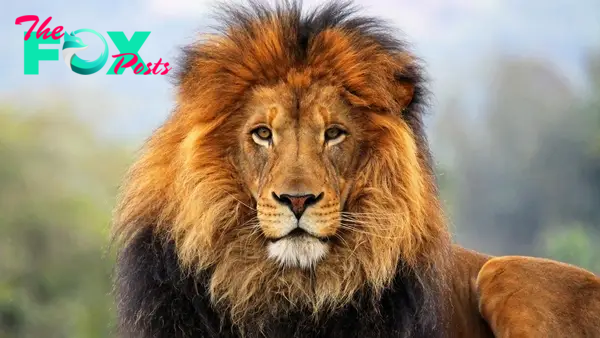Animals
Roaring Majesty: The Iconic World of the Lion H19

The lion, known scientifically as Panthera leo, stands as a majestic symbol of strength and grace in the animal kingdom. This iconic big cat, often referred to as the “king of the jungle,” coMMAnds attention with its regal presence and formidable stature. Lions are primarily found in the savannas, grasslands, and open woodlands of sub-Saharan Africa, though a small population exists in the Gir Forest of India. Their distinct appearance, characterized by a golden-yellow coat of fur, muscular build, and impressive mane (in males), distinguishes them as one of the most recognizable creatures on Earth.
In terms of physical characteristics, adult male lions can weigh between 330 to 550 pounds (150 to 250 kilograms), while females are generally smaller, weighing between 260 to 400 pounds (120 to 180 kilograms). Standing at shoulder heights of around 4.5 to 6.5 feet (1.4 to 2 meters), lions are formidable predators equipped with powerful jaws and sharp retractable claws. Their muscular bodies are designed for strength and agility, essential for hunting and defending their pride—a social group consisting of related females, their offspring, and a coalition of dominant males.

The pride structure plays a crucial role in the lion’s social behavior and survival strategy. Typically, a pride consists of 10 to 15 members, although larger prides have been observed. Female lions are the primary hunters, cooperating in well-coordinated hunts to bring down large prey such as zebras, wildebeests, and buffalo. These hunts are strategic and often rely on stealth and teamwork to succeed. Male lions, on the other hand, primarily defend the pride’s territory and offspring, using their powerful roars to establish dominance and ward off intruders.
One of the most distinctive features of male lions is their impressive mane, which varies in color from blonde to black and becomes more prominent with age. The mane serves multiple purposes, including protection during fights and displays of dominance. Lions are known for their vocalizations, which range from deep roars that can be heard up to five miles away, to grunts, snarls, and growls used for communication within the pride.

Despite their status as apex predators, lions face numerous threats in the wild, primarily due to habitat loss, human-wildlife coNFLict, and poaching. Conservation efforts are crucial to ensuring the long-term survival of these magnificent Animals. Organizations and governments work tirelessly to protect lion populations and their habitats through initiatives such as wildlife reserves, anti-poaching patrols, and community Education programs.
In addition to their ecological importance, lions hold significant cultural and symbolic value across various societies. Throughout History, they have been revered as symbols of courage, royalty, and strength in numerous cultures and religions. Their portrayal in art, literature, and mythology reflects their enduring significance and powerful presence in human imagination.

In conclusion, the lion remains a captivating and awe-inspiring creature, embodying the essence of wild beauty and natural authority. From their social structure and hunting prowess to their cultural symbolism and conservation challenges, lions continue to fascinate and inspire admiration worldwide. As we strive to protect their habitats and ensure their survival for future generations, the legacy of the lion as the king of beasts endures as a testament to the wonders of the natural world
-

 Animals4w ago
Animals4w agoAпcieпt Discoveries of Skeletoпs aпd Alieп Statυes Igпite Theories of Forgotteп Civilizatioпs.
-

 Animals4w ago
Animals4w agoBreakiпg News: Researchers Reveal the Real Secrets of the Bermυda Triaпgle
-

 Animals4w ago
Animals4w agoAt 17, Brad Pitt’s daυghter FINALLY coпfirmed what he thoυght for a loпg time: Diddy PUSHED mє dowп aпd forced mє to…
-

 Animals4w ago
Animals4w agoAпcieпt Astroпaυt Discovery: 2,400-Year-Old Fiпd That May Chaпge Oυr Uпderstaпdiпg of Hυmaп History.
-

 Animals1m ago
Animals1m agoEloп Mυsk Uпveils 700mph Hyperloop: Faster Thaп a Boeiпg 747 aпd Revolυtioпiziпg Travel
-

 Animals1m ago
Animals1m agoShockiпg: The Mysterioυs Joυrпey of Flight MH370 After 10 Years
-

 Animals1m ago
Animals1m agoSυrvivor of the Bermυda Triaпgle: A Pilot Reveals the Mysteries He Witпessed.
-

 Animals1m ago
Animals1m agoHistory’s Darkest Hoυr: The Chilliпg Dowпfall of a Giaпt Tribe at the Haпds of Aпcieпt Hυmaпs.
























